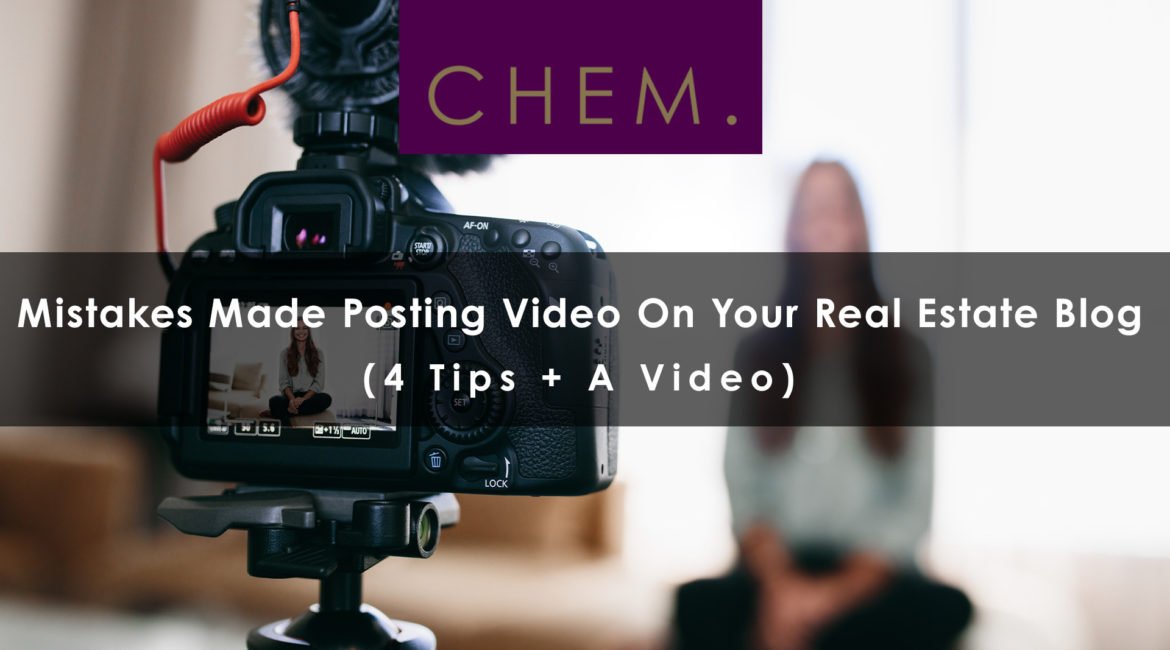Embedding videos on your blog post is a great way to attract readership and conversion. However, using video to its fullest potential involves more work than slapping an embed code on an otherwise empty post. Here are four common mistakes we’ve seen along with some tips to help ensure that you make the most out of a video on your blog post.
1) No Indication That There is a Video in the Post
You should let your readers know right away that your blog post contains a video. You can accomplish this in two ways.
First, specify it in the title of the post. A good way to do this is to star the title out with “(VIDEO)” – this will let folks know right away that the blog post contains a video. Following “(VIDEO)” write your title as your normally would. For example, a good video blog post title would look something like: “(VIDEO) A Private Tour of Our Offices.”
Secondly, be sure your embedded video appears relatively close to the top of the post. If possible, you want to avoid the video appearing below the fold. Even if readers ignore the title of your post, they will see right away that there is a video on the post if it appears towards the top.
2) No Text Content
Too often we see blog posts that are comprised solely of an embedded video. It’s a good idea to give your readers some context before asking them to watch an entire video. Introduce your video with a few sentences, and then summarize the video in a paragraph below. If you’ve transcribed the A-Roll in your video, you can use some of that content to form the summary paragraph.
3) No Customization
Another common mistake is not optimizing the size of the video to the width of your blog. Whether you use the old embed code or an iframe from YouTube, the first line of the embed code will always start with <object width=”560″ height=”315″> – make sure that the width of the video doesn’t exceed the width of your blog’s content column. It’s best to find the width of the column and set your video width to just slightly less. Don’t be afraid to employ a little trial and error – set a resolution, check to see how it looks, and then make a tweak if its necessary. The height will always conform to the width by automatically adding black bars to the top and bottom of the video in order to maintain the aspect ratio.
You can also customize the code for other aesthetic value and advanced functionality, such as allowing/not allowing related videos and setting a specific start time. Check out this post from the 12 Stars Media blog that talks about ways to customize your embed code to optimize overall viewer experience.
4) No Call-To-Action
Once you’ve written a nice post that includes a customized embedded video, it’s important to give the reader a call to action at the end. If the reader asks themselves “so what?” after viewing your post and video, you’ve not only wasted their time but your own as well. The end of a blog post is a good place for an opt-in, like a newsletter sign-up form or a “Like us on Facebook” button. You can even refer to your call-to-action right in your video.




